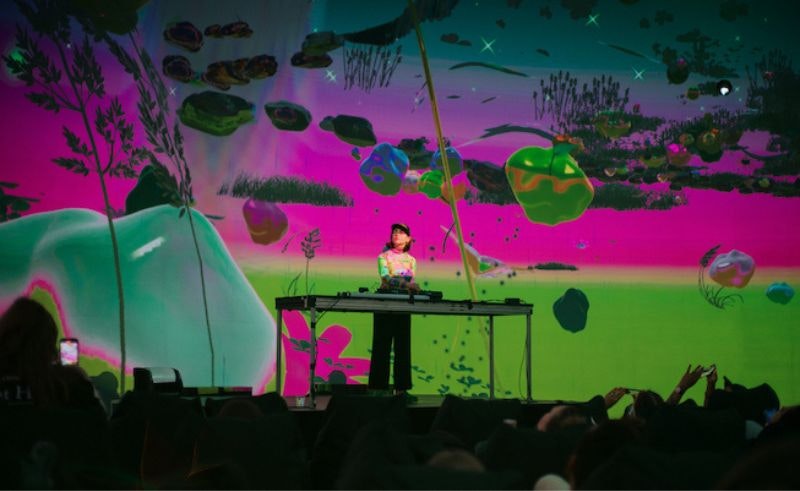

The Difference of Music Through The Decades
By MDLBEAST
April 23 2024
The Difference of Music Through The Decades
By MDLBEAST
April 23 2024
The landscape of music has undergone profound changes through the decades, each era bringing its unique sound, culture, and technology that has influenced not just the music industry but also societal norms and fashion.
From the rock and roll revolution of the 1950s to the digital streaming platforms of the 2020s, the difference in music through the decades is a fascinating journey. This article explores the distinctive characteristics of music from different decades, with a spotlight on the 1980s, 1990s, and 2000s, providing insights into how music has shaped and been shaped by the times.
The 1950s to the 1970s: The Foundation Years
The 1950s marked the birth of rock and roll, with artists like Elvis Presley and Chuck Berry at the forefront, challenging the status quo and setting the stage for the cultural revolutions to come.
The 1960s introduced the world to the British invasion, led by The Beatles and The Rolling Stones, which not only dominated the charts but also influenced fashion, language, and attitudes towards the Vietnam War.
The 1970s saw the diversification of rock into subgenres such as punk, disco, and heavy metal. Artists like The Ramones and The Sex Pistols brought an edge and raw energy to music, while disco ruled the dance floors with its upbeat tempo and glamorous attire.
The 1980s: The Era of Synth-pop and Glam Rock
The 1980s, or the era of 80s music hits, was characterized by the rise of synth-pop, new wave, and glam rock. Artists and bands like Michael Jackson, Madonna, Duran Duran, and Queen embraced synthesizers and electronic production techniques, creating a sound that was distinctly futuristic at the time.
This decade also saw the emergence of the music video, with MTV launching in 1981 and becoming a pivotal platform for artists to reach a global audience. The visual element of music became almost as important as the sound itself, leading to iconic videos like Michael Jackson's "Thriller" and a-ha's "Take On Me." Fashion was bold and colorful, with big hair, shoulder pads, and neon colors dominating the scene.
The 1990s: The Diversity of Sound
The 1990s, known for its eclectic mix of genres, witnessed the explosion of grunge, hip-hop, and boy bands. Nirvana, Tupac Shakur, The Notorious B.I.G., and Britney Spears each led their respective genres, showcasing the decade's diversity.
The era of 90 songs was also marked by the rise of alternative rock bands like Radiohead and the Red Hot Chili Peppers, who gained critical acclaim and a dedicated following. Hip-hop and rap became dominant forces in the music industry, with artists like Dr. Dre and Snoop Dogg bringing West Coast rap to the forefront.
The 1990s also saw the rising popularity of the internet, which began to change how music was distributed and consumed, setting the stage for the digital age.
The 2000s: The Digital Revolution
The 2000s music scene was revolutionized by the internet and digital music platforms. Napster, followed by iTunes, transformed music consumption, making it possible to buy and listen to music with the click of a button.
This decade was characterized by a blend of pop, hip-hop, and R&B, with artists like Beyoncé, Eminem, and Lady Gaga dominating the charts. The iPod became a cultural icon, further emphasizing the shift towards digital music consumption. Social media platforms like MySpace played a crucial role in discovering and promoting new artists, and democratizing music production and distribution.
The 2010s and Beyond: Streaming and Globalization
The 2010s were defined by the rise of streaming services like Spotify and Apple Music, which have made music more accessible than ever before. This era has seen the globalization of music, with K-pop bands like BTS and Latin genres gaining international popularity. Artists are now more than ever influenced by a global mix of sounds and cultures, leading to innovative and diverse music.
A Mark of Innovation
The evolution of music through the decades reflects broader cultural, technological, and social changes. Each era brings its sound and ethos, from the rock and roll of the 1950s to the digital beats of the 2020s.
As we look to the future, it's clear that music will continue to evolve, influenced by new technologies and the ever-changing taste of global culture. The journey of music is an ongoing symphony of innovation, rebellion, and fusion, reflecting the human experience in its myriad forms.
-
Keep up with Soundstorm news with MDLBEAST and prepare for a unique experience where we amplify music, talents and culture.
Share this


